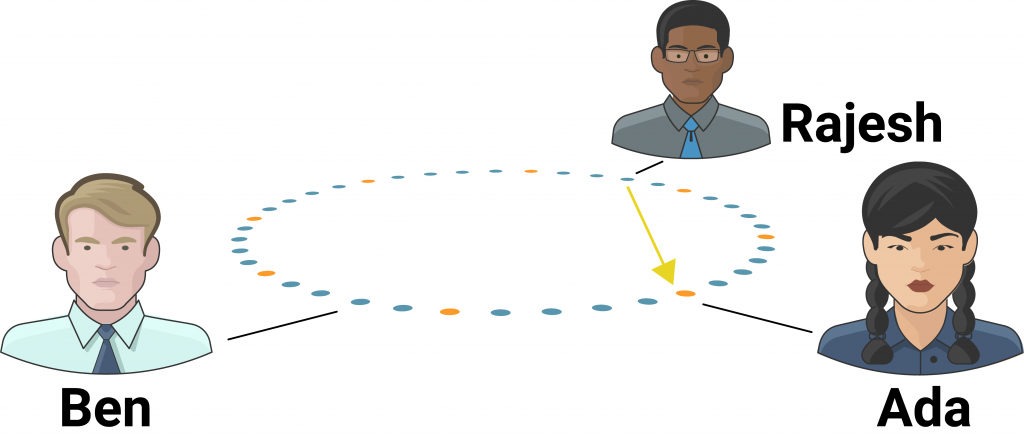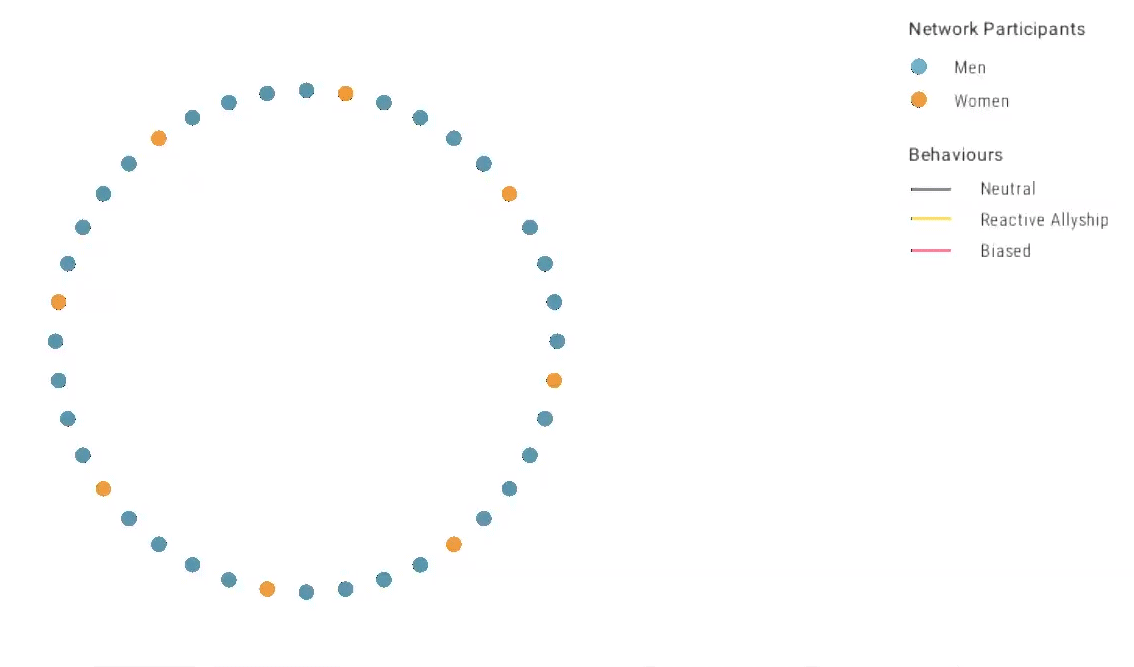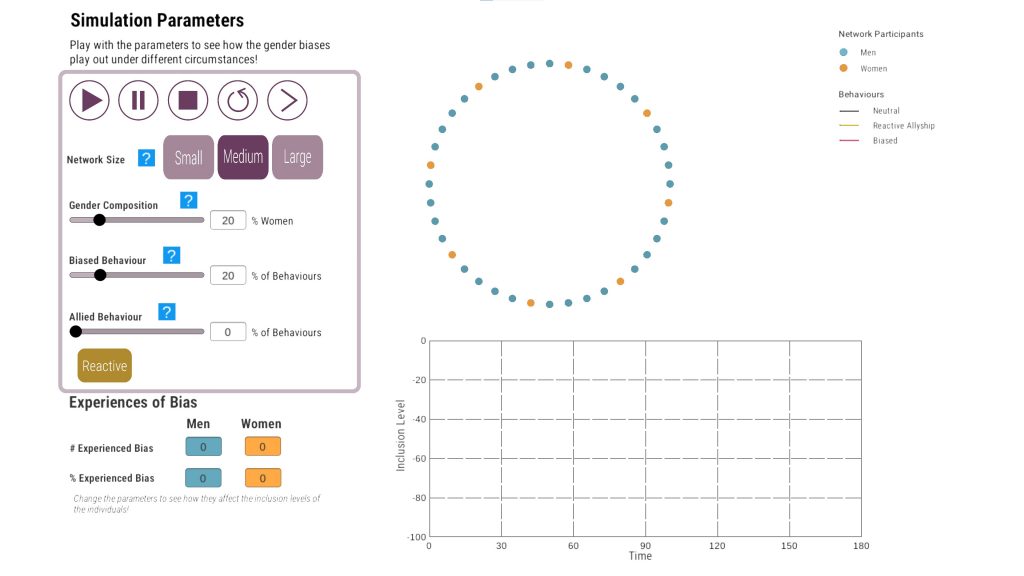Allyship is a popular concept, whose definition can vary. We define allyship as taking action to support those who might otherwise be or feel excluded.
Reactive Allyship
Often when thinking about allyship, we think about reactive allyship – reacting to bias when we see it.
This can look like:
- Confronting disrespectful, gender-biased comments
- Addressing inappropriate gender-related jokes
- Calling out implicit stereotyping (e.g., a coworker assuming a woman would not be interested in a position that requires technical expertise)
- Questioning the lack of women candidates on a job shortlist
Ada, Ben, & Rajesh
Let’s return to Ada’s interaction with Ben. This time, Rajesh, the project manager, is joining their conversation.

Suppose that Ben suggests that Ada takes notes again during an important client meeting. This time, Rajesh steps in and says he thinks Ada should lead client talks since she had good ideas during their planning meeting.

“Ada should lead the next meeting with the client; she had some solid ideas in our planning meeting.”
Note!
Another key assumption of our simulator is that all allyship actions are effective (which is not always true in reality)
To be successful, allyship needs to be recognized as supportive by those the action is intended to support (see De Souza et al, forthcoming)
Intended allyship does not always result in experienced allyship.
The benefits of speaking up
This time, let’s assume that 25% of interactions are biased and 15% of interactions are successful reactive allyship actions (represented by yellow arrows).
What would an average day at the office look like now?

Notice that individuals who are targets of successful reactive allyship actions are pulled back into the network as their inclusion increases.
Reflect: What do you notice about women’s inclusion compared to the previous round?
Try It Out
In the simulator, you will see an allied behavior slider added to the control panel. Change the percentage of allied behavior and see what happens to the inclusion level.
Click to access the
reactive allyship simulator

Overall:
Reactive allyship actions can be effective in reducing the effects of bias in the company:
- When allyship actions are taken and positively experienced by minority group members, the overall impact of bias is reduced
- Members of the advantaged group can be very persuasive and influential as allies*
But, keep in mind that confronting bias directly is not always the most successful tactic; there are still instances where people might not witness or notice bias when it happens.
So if reactive actions like confrontations are limited to instances of bias that get noticed, what other options do Ada and her colleagues have?
From Ada’s Perspective…
![]()
 Follow
Follow